Bill Peckmann &Comic Art &commercial animation &Story & Storyboards &Toth storyboard 24 Jan 2013 07:10 am
Toth’s SuperFriends Storyboard
- Alex Toth did storyboards, too. Here’s one he did for Hanna-Barbera, and it shows the visceral strength of the “SuperFriends” project. More than the original comic book and greater than the final outcome. It’s a class act, and great thanks to Bill Peckmann and Manual Auad who brought it to him. To Bill:
- Many thanks to illustration art publisher, historian, fan extraordinaire, Manuel Auad, we are able to post 28 pages of a Hanna-Barbera “Super Friends” storyboard done by Alex Toth.
Even though the pages are Copies of Copies, they are nice clean copies that haven’t been covered with down-the-line production notes yet.
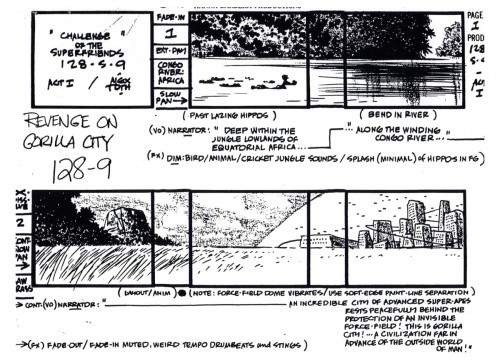 1
1
Here’s another board he did which we posted a while back.
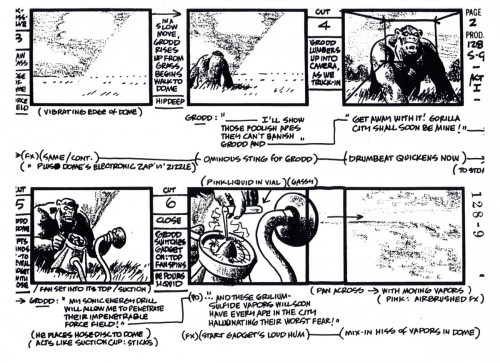
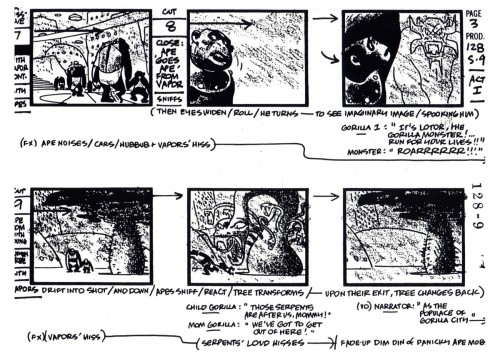
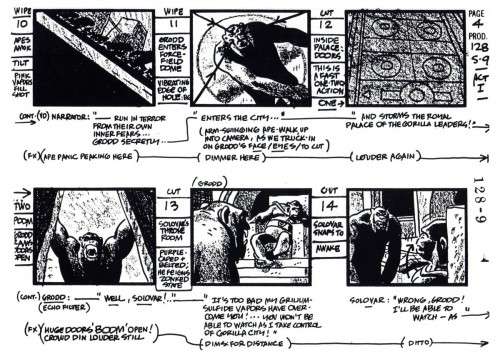
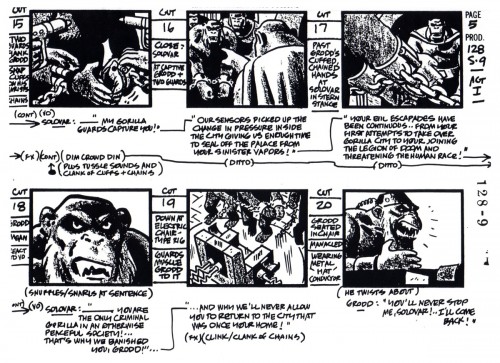
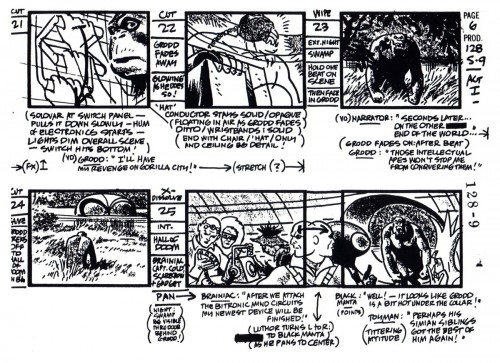
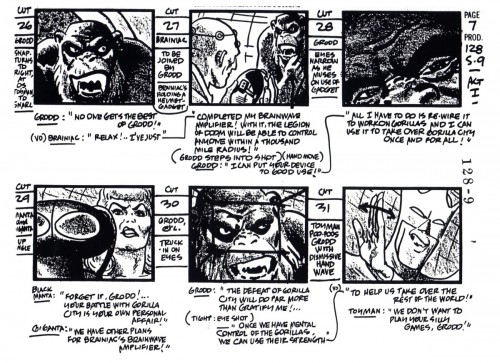
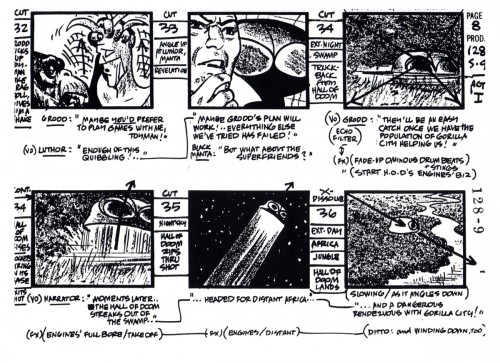
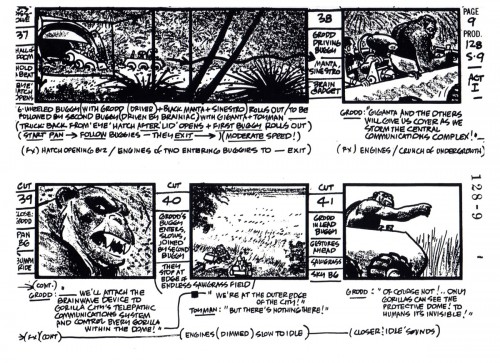
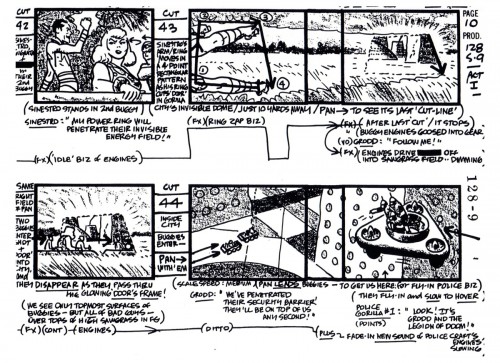
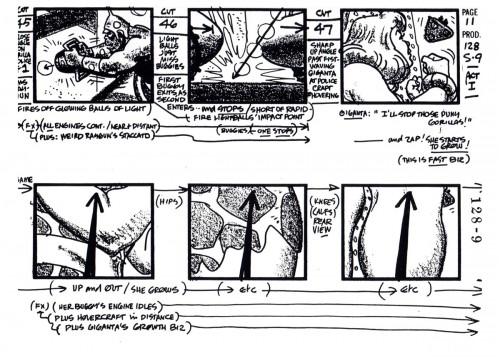
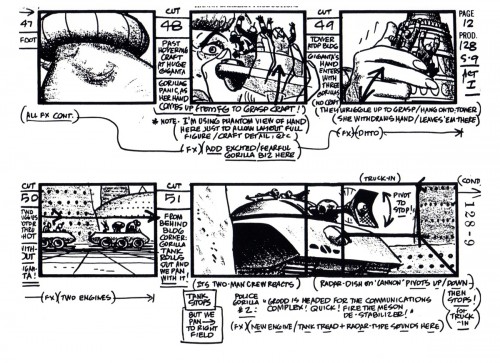
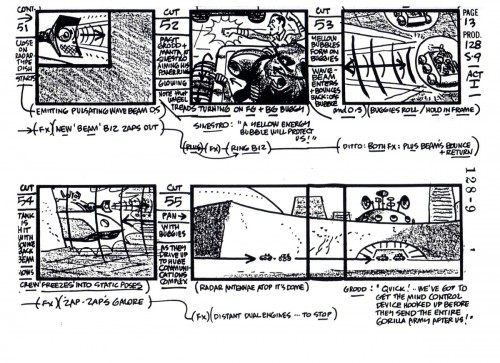
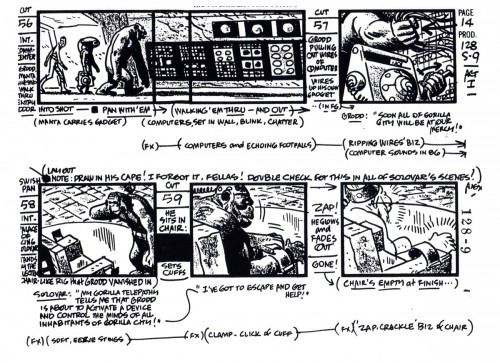
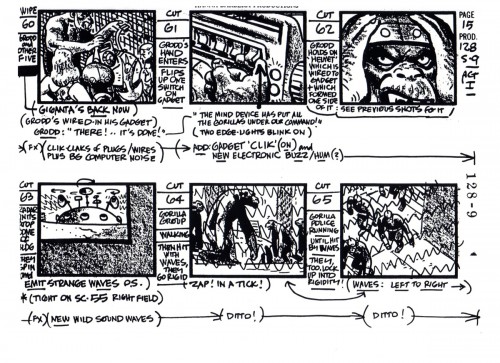
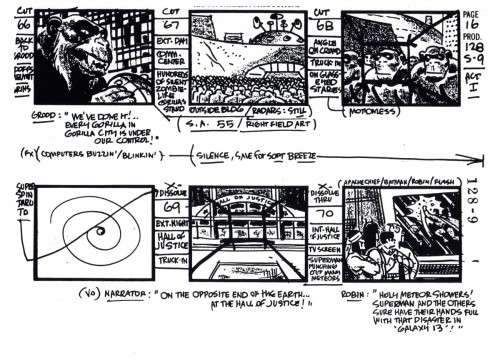
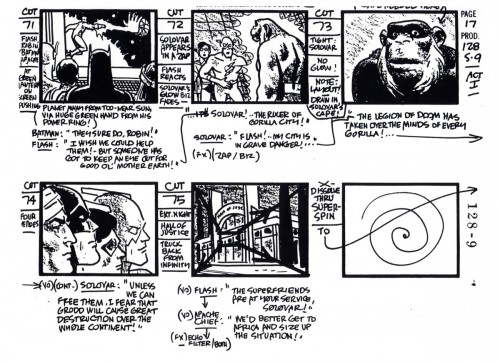
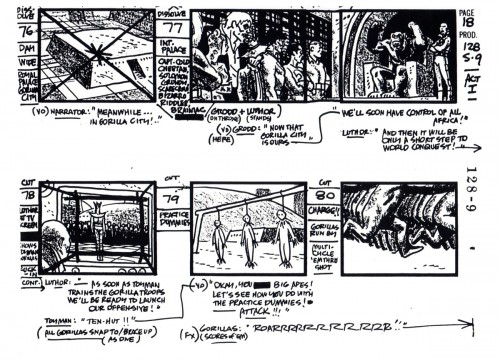
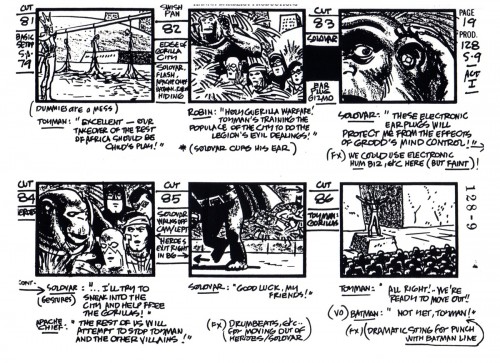
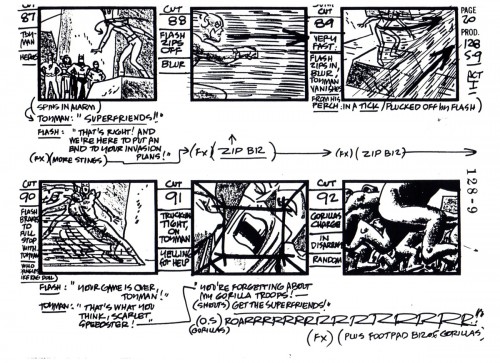
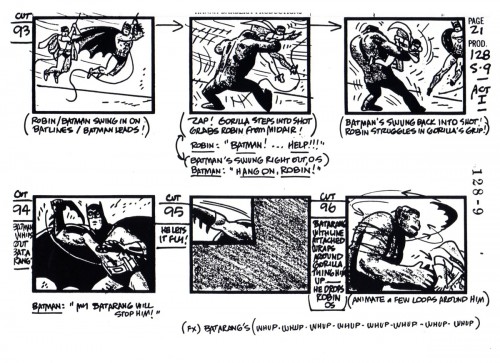
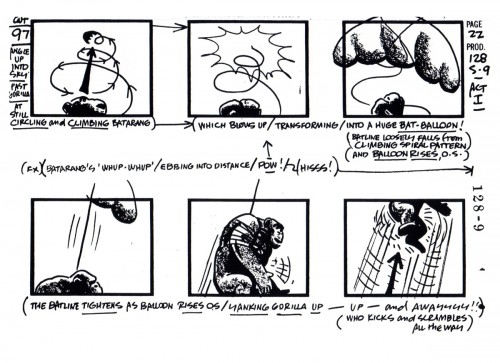
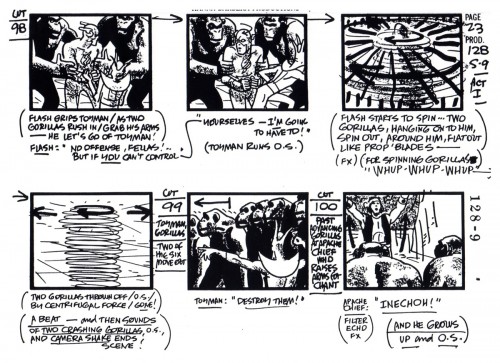
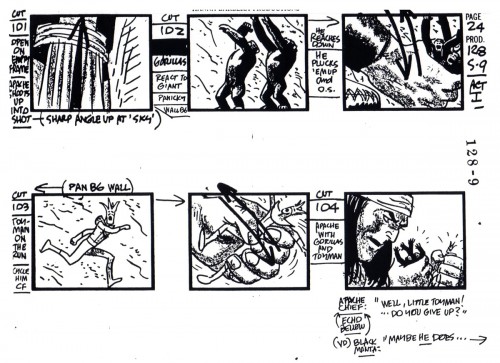
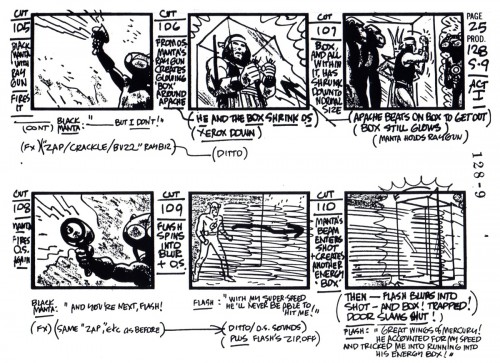
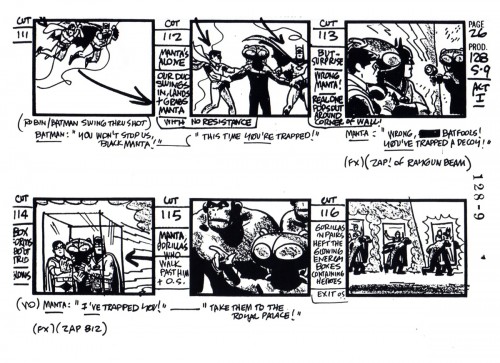
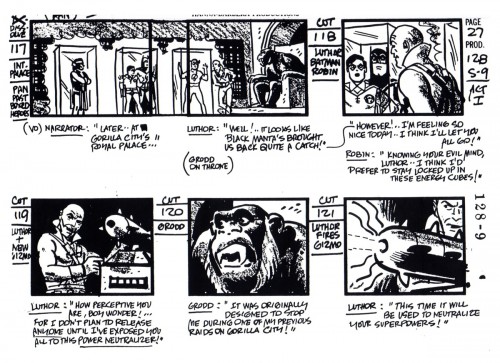
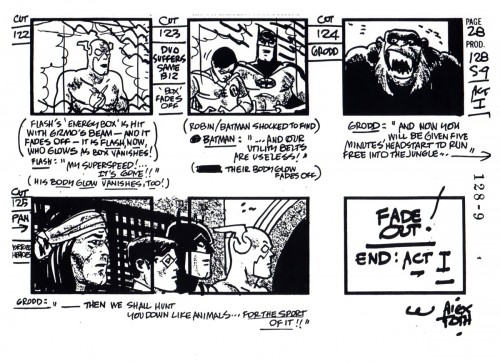

on 24 Jan 2013 at 10:39 am 1.J.J. Sedelmaier said …
If only the results of Toth’s design and storyboard input were as splendid as his originals. . .
on 24 Jan 2013 at 12:52 pm 2.Tom Minton said …
He crossed the camera line several times but his drawing was great. Alex Toth understood storyboarding better than his comic book contemporaries Jack Kirby and Gil Kane. Kane told me that what constantly threw him about the act of drawing a storyboard was having to draw in panels that had to be the same size.
on 24 Jan 2013 at 4:23 pm 3.Joakim said …
Awsome! Thanks Bill and Manuel!
on 26 Jan 2013 at 5:27 pm 4.the Gee said …
Did Kane ever overcome his panel problem?
I would think he did but I am curious if he did and if he mentioned how he figured it out. (researching what others did, watching the finished product, drawing “past the panel†in his head to figure out how it could look.)
It took me a while to truly appreciate with Kane could draw in comics. Somehow, his worked just clicked with me once I realized that most of the figures he drew were in the middle of a motion. I probably figured out his posing and staging were more dynamic around that same time. Suffice it to say, I began to really dig what he did and excused the “roughness†of the drawing. He would sometimes –from what I recall– put in extra lines, add wrinkles to faces and clothing. But, the draftsmanship still showed otherwise.
I guess it could be said he had decent storytelling chops.
So, now I’m very curious about this. I didn’t even know he did storyboards. I knew Toth and Kirby worked in the filed but I didn’t know about him.
on 28 Jan 2013 at 10:56 am 5.Tom Minton said …
Gil Kane was brought on staff by the Ruby-Spears animation studio around 1984, during the period when Jack Kirby and Doug Wildey were also contracted to mainly supply rough and sometimes pencilled development artwork. I was on staff in the same action-adventure unit under the same supervisor, the late John Dorman, who was instrumental in getting the studio to use those three comic book legends to work in animation. I got to know all three and each one approached his work a little differently. At one point Dorman asked Gil to try doing a storyboard and, though he was reluctant to do it, he drew several pages. Of course they were impeccably drawn but the stuff didn’t flow. There was scant visual continuity from panel to panel. Dorman asked me to take Gil’s attempt and fix it. This involved Xeroxing the original pages to preserve them (Ruby-Spears archived all of Kirby, Kane and Wildey’s development artwork) and then re-arranging what bits of Gil’s drawings worked to communicate the story points. Gil told me about being baffled by the notion of having to tell a story in film language, citing the same-sized panels as his major stumbling block. Ruby-Spears continued to use Gil’s voluminous designs for action-adventure characters, props and backgrounds (none of which was done justice by the overseas animation subcontractors of that day) and of course for his stellar, oversized presentation art boards. A few years after I left that studio Ruby-Spears produced an animated version of Superman that used Gil’s character designs and leaned on him pretty much for it’s overall look. Gil may have even attempted storyboarding again, though he certainly did not have to.
on 28 Jan 2013 at 4:51 pm 6.the Gee said …
Thanks for the explanation.
When I read what you wrote and thought to ask about it, I thought the storyboard hangup was just comic book->animation storyboard. But, from what it sounds like he was possibly going for live action boards first. Doing entire scenes for each panel or just not making what works for animation.
Every so often I read about people who worked at Ruby Spears back then (i have a vague idea of the shows done and off the top of my head they are are kind of oddball ones). Jim Woodring was there around that time, too, wasn’t he?
For what it is worth, it somehow doesn’t surprise me to hear that there were “voluminous designs†for characters made by Kane. Somehow those guys seem to have tapped into some fountain-like inkwell, or something. Just the amount of work I’ve seen or know of is staggering. The amount of what Kane, Wildey and Kirby probably did for Ruby-Spears–whether it was good, so-so or bad–would probably put a lot of people to shame.
Thanks again.
on 29 Jan 2013 at 2:36 pm 7.Tom Minton said …
(Sorry to be taking up all this space in the comments of your blog, Michael.) In reply to the Gee, yes, Jim Woodring was there with us at Ruby-Spears during that timeframe. He was and is a fine artist and watercolor painter with a well-developed color sense but he (like all of us) found it supremely frustrating how stellar artwork done on these shores could be so ill-translated overseas, then air (often in less-than-broadcast standard rough cut form, with visible tape splices on the film) with all or our names in the credits, as though THAT standard of work was what we had drawn. Jim eventually departed the Hollywood animation industry altogether, just prior to the late 1980′s animation boom, to devote his life to telling stories in the graphic novel format, with occasional forays into gallery art, where he could retain quality control over his own stuff.
on 29 Jan 2013 at 3:38 pm 8.the Gee said …
Thanks again for the reply.
As it goes, I think blog comments sections may get comments long past the point when the post is considered current. Hopefully, it is alright to do so.
Anyway, it is nice to see these storyboards.Surely, there’s some great story boarders and it is interesting to see Toth and others handled the ones they did and whatever they did in animation.
Jim is a good guy. I’ve appreciated him for years. A lot, actually.
He also had some of his characters adapted into toys by a Japanese toy company. Weird. Beautiful. Surreal toys!